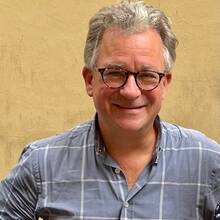At the Mass for the Sick which Pope Benedict celebrated in Lourdes, France, this morning, he seemed to downplay the importance of miracle physical cures in favour of the idea of healing as an experience of God.
“How many come here to see it with the hope – secretly perhaps – of receiving some miracle,” the Pope said. “Then, on the return journey, having had a spiritual experience of life in the church, they change their outlook upon God, upon others and upon themselves.”
Benedict XVI also spoke of the spring of water which the Lady in a vision revealed to Bernadette 150 years ago as a “sign” -- of “the living water” of Mary’s womb which “has poured forth to irrigate human history”.
Some might think that this is rather metaphorical language for the 7,000 physical cures which are reported each year to the Medical Bureau in Lourdes.
The “Lady” who appeared to Bernadette made no mention of cures – only that people should come and wash in the spring. But reports of miraculous healings among those who obeyed her instructions began almost immediately. The first miraculés, as the Lourdes-cured are known, were from the town itself: Mme Latapie had ulnar paralysis due to traumatic elongation of the bracial plexus; M. Bouriette had been blind in one eye for 20 years. The most dramatic cure was the 1908 healing of a Belgian labourer, Pierre de Rudder, who had two broken bones in a leg smashed by a fallen tree 40 years earlier. His wife fainted when he saw him walking normally after he had prayed to Our Lady at a replica of the Grotto. His wounds had healed, the bones were rejoined, and his legs were the same length.
What, exactly, is a miracle? The Church sees miraculous cures as a supernatural but not anti-natural. Miracles do not work against nature, but with it. (Scars remain, for example.) A miraculous cure might be regarded as anti-natural only by those who view nature as self-enclosed, uncreated. Equally, a cure which is explicable within the terms of science may be regarded as miraculous by those who experience it.
What makes an event genuinely “of God” – a miracle, something “marvellous in our eyes” -- is not that it contradicts nature, but that it calls into question and transform’s a person’s sense of their own existence.
That is the view, at least, of a man who has done a lot of thinking on the subject – Dr Patrick Theillier, the Bureau’s current head. For 25 years he practised as a doctor, but one always interested in philosophy and theology and the spiritual dimension -- and fascinated by the crossovers between science and faith.
Only 67 miracle cures have been “approved” by the Bureau (the last was in 1987). Few people who report being cured are willing to undergo the elaborate processes of verification which are required, or are chary about enduring the publicity which follows.
The day I met Dr Theillier in 2004, for example, he described how that morning he had a young girl come to report being cured of a genetic condition she had had all her life. “She came here to report it, but she did not want to take it any further,” he told me. “Of course, I respect that.”
A miracle, he explained, is not simply what science cannot explain -- namely an instantaneous repair of the body. It needs a recognition, too, by the person. “People know it’s a miracle, because they can point to the moment and the sensation.”
The stories of the miraculés bear this out: they describe being “invaded by a sudden warmth” or experiencing a “sweetness” before discovering that they have been cured. “I would happily endorse anyone who says they have experienced a miracle,” Dr Theillier told me. “After all, if God, hundreds and thousands of years ago, created the retina of the eye, why cannot He not now re-create instantaneously that retina in a person who is blind?”
But of course a sudden healing is also an objective experience -- to wit, the Belgian labourer’s wife, who fainted at seeing her husband suddenly walking. The Bureau exists to "announce the cures to the world", says Theillier. “For that purpose we have to investigate scientifically, to look for explanations within science.”
When the Bureau was founded science and religion were deemed antithetical – by religious people as much as by secularists. Nowadays, science is more open to faith, and cures are no longer considered purely physical. Healings these days more likely to be releases from addiction or no longer being affected by a deep childhood wound. Lourdes shows, says Theillier, the power of healing at this level, through the Sacrament of Reconciliation and the baths. “Amazing things happen as result of bathing, experiences of liberation – and they happen to non-Catholics and non-Christians as well as Catholics.”
But something I had not considered, until the doctor told me of it, was the stress involved in being cured. One of Theillier’s main jobs is to support the miraculés in the process of adjustment to their post-healing existence -- which means dealing with their guilt.
“All the miraculés ask me, ‘why me?’ Their lives were orientated in a certain way, governed by their illnesses, and suddenly that’s taken away. It’s stressful.” (That, of course, is the question Bernadette asked. “Why me?”)
“How do you answer them?” I asked Theilllier.
“We do not have the capacity to understand that. I don’t have a reply. In the end, it’s the freedom of God. That’s the first question I will ask God when I go: ‘how come some get cured, and others not?’"
Austen Ivereigh







